#Respiratory Sector
Text
The $64.2 billion Respiratory Market & Its Future Trends, Segmentation and Forecast
The global respiratory market size reached a staggering USD 42.3 billion in 2023. This impressive figure highlights the significant need for respiratory devices and treatments to address a wide range of respiratory conditions. The market is projected to grow at a Compound Annual Growth Rate (CAGR) of approximately 7.4%, reaching an estimated USD 64.2 billion by 2030. This growth can be attributed to several factors:
Rising Prevalence of Chronic Respiratory Diseases: Conditions like asthma, chronic obstructive pulmonary disease (COPD), and sleep apnea are on the rise due to factors like air pollution, smoking, and an aging population.
Increased Life Expectancy: With an aging population, the demand for respiratory support devices for chronic conditions is expected to rise.
Technological Advancements: The development of innovative respiratory devices, such as portable nebulizers and advanced ventilators, offers improved treatment options.
Growing Focus on Homecare: The increasing emphasis on home-based care for respiratory patients fuels the demand for user-friendly respiratory devices.
Respiratory Market Segmentation: Catering to Diverse Needs
The respiratory market segmentation reflects the vast array of products and technologies available to address different respiratory needs:

By Application:
Therapeutic Respiratory Devices Market: This segment includes devices used for treatment, such as nebulizers, metered-dose inhalers (MDIs), and continuous positive airway pressure (CPAP) machines used for sleep apnea. The respiratory inhalers market is a significant sub-segment due to the widespread use of inhalers for asthma and COPD.
Anesthesia & Respiratory Devices: Specialized equipment used in surgical settings to deliver oxygen and maintain proper ventilation during anesthesia. The anesthesia and respiratory devices market caters to the specific needs of hospitals and surgical centers.
Respiratory Gas Analysis: This technology analyzes the composition of respiratory gases to assess lung function and identify potential respiratory issues.
By Device Type:
Respiratory Care Devices: This broad category encompasses various devices used for diagnosis, treatment, and monitoring of respiratory conditions. Examples include nebulizers, inhalers, ventilators, and CPAP (continuous positive airway pressure) machines.
Respiratory Monitoring Devices: These devices track vital signs such as blood oxygen levels and respiratory rate, allowing for continuous monitoring of patients with respiratory difficulties. The respiratory monitoring devices market is experiencing significant growth due to the increasing focus on patient safety and remote monitoring.
Respiratory Measurement Devices: These devices measure lung function and capacity, providing vital diagnostic information for respiratory conditions. The respiratory disease testing market relies heavily on these devices for accurate diagnosis.
Respiratory Protective Equipment (RPE): This equipment protects users from inhaling harmful substances, including masks and respirators. The respiratory protective equipment market is expected to witness growth due to rising concerns about air pollution and pandemics.
Take a look at: Forecasting the Respiratory Market, Size, Segmentation and Future Trends
Top Players in Respiratory Market: Breathing Innovation
Several established medical device manufacturers and specialty respiratory companies dominate the respiratory market:
Some of the top players in the respiratory market include:
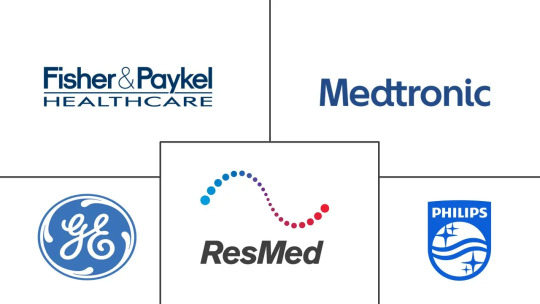
Philips Healthcare
ResMed
Medtronic
GE Healthcare
Fisher & Paykel
Emerging Markets: A Rising Demand for Respiratory Solutions
Developing nations with growing populations and increasing healthcare expenditure present a significant opportunity. For instance, the bovine respiratory disease treatment market highlights the growing demand for respiratory solutions in the animal health sector.
Respiratory Market Trends: Shaping the Future of Respiratory Care
Exciting trends are shaping the respiratory market and transforming how we manage respiratory conditions:
Focus on Homecare Solutions: The emphasis on providing effective respiratory care solutions for patients in a home setting is driving innovation in portable and user-friendly devices.
Telemedicine Integration: Telehealth platforms allow remote monitoring and consultations with healthcare professionals, improving respiratory care management.
Connected Devices and Data Analytics: The integration of Internet of Things (IoT) technology allows for real-time data collection and analysis of respiratory parameters, leading to personalized treatment plans.
Emphasis on Early Detection and Prevention: The trend towards early detection and prevention of respiratory diseases through screening programs and lifestyle modifications is gaining momentum.
Challenges and Opportunities: Navigating the Respiratory Landscape
While the respiratory market offers promising opportunities, challenges also exist:
Challenges:
Cost Concerns: The high cost of some respiratory devices, particularly advanced equipment, can be a barrier to access for some patients.
Counterfeit Products: The presence of counterfeit respiratory products poses a safety risk and necessitates stringent quality control measures.
Compliance with Regulations: Navigating evolving regulatory requirements for medical devices can be complex and requires ongoing compliance efforts.
Opportunities:
Focus on Homecare: The trend towards homecare for respiratory patients creates a demand for portable and user-friendly respiratory devices.
Telemedicine Integration: Integrating respiratory monitoring devices with telemedicine platforms allows for remote patient monitoring and improved care coordination.
Emerging Technologies: The potential of new technologies like artificial intelligence and wearable devices can revolutionize respiratory care and diagnosis.
Respiratory Market Future Outlook: A Collaborative Approach
The respiratory market future outlook is promising, with a projected market size of USD 64.2 billion by 2030. And this suggests a market driven by innovation, collaboration, and a focus on improving patient outcomes. Here's what we can expect:
Collaboration between Medical Device Manufacturers and Healthcare Providers: Collaboration between these entities will be crucial for developing and implementing effective respiratory care solutions that address real-world clinical needs.
Increased Focus on Patient Education and Self-Management: Empowering patients with respiratory conditions to manage their health through education and user-friendly technology will be a key focus.
Conclusion:
The respiratory market plays a vital role in supporting lung health and improving the lives of millions suffering from respiratory illnesses. As the market continues to evolve, driven by innovation, collaboration, and a focus on patient-centric care, we can expect a future where managing respiratory conditions becomes more effective, accessible, and empowering for individuals and healthcare professionals alike.You can also read about: Future Forecast and Trends in the $35.58 Billion Respiratory Market
#Respiratory Market#Respiratory Industry#Respiratory Sector#Respiratory Market Size#Respiratory Market Segmentation#Respiratory Care Devices Market#Respiratory Devices Market#Therapeutic Respiratory Devices Market#Respiratory measurement devices market#respiratory gas analysis#anesthesia and respiratory devices market#respiratory disease testing market#bovine respiratory disease treatment market#respiratory inhalers market#respiratory monitoring devices market#respiratory protective equipment market#Top Players in Respiratory Market#Respiratory Market Trends#Respiratory Market Future Outlook
0 notes
Text
so: masking: good, unequivocally. please mask and please educate others on why they should mask to make the world safer for immune compromised people to participate in.
however: masking is not my policy focus and it shouldn't be yours, either. masking is a very good mitigation against droplet-born illnesses and a slightly less effective (but still very good) mitigation against airborne illnesses, but its place in the pyramid of mitigation demands is pretty low, for several reasons:
it's an individual mitigation, not a systemic one. the best mitigations to make public life more accessible affect everyone without distributing the majority of the effort among individuals (who may not be able to comply, may not have access to education on how to comply, or may be actively malicious).
it's a post-hoc mitigation, or to put it another way, it's a band-aid over the underlying problem. even if it was possible to enforce, universal masking still wouldn't address the underlying problem that it is dangerous for sick people and immune compromised people to be in the same public locations to begin with. this is a solvable problem! we have created the societal conditions for this problem!
here are my policy focuses:
upgraded air filtration and ventilation systems for all public buildings. appropriate ventilation should be just as bog-standard as appropriately clean running water. an indoor venue without a ventilation system capable of performing 5 complete air changes per hour should be like encountering a public restroom without any sinks or hand sanitizer stations whatsoever.
enforced paid sick leave for all employees until 3-5 days without symptoms. the vast majority of respiratory and food-borne illnesses circulate through industry sectors where employees come into work while experiencing symptoms. a taco bell worker should never be making food while experiencing strep throat symptoms, even without a strep diagnosis.
enforced virtual schooling options for sick students. the other vast majority of respiratory and food-borne illnesses circulate through schools. the proximity of so many kids and teenagers together indoors (with little to no proper ventilation and high levels of physical activity) means that if even one person comes to school sick, hundreds will be infected in the following few days. those students will most likely infect their parents as well. allowing students to complete all readings and coursework through sites like blackboard or compass while sick will cut down massively on disease transmission.
accessible testing for everyone. not just for COVID; if there's a test for any contagious illness capable of being performed outside of lab conditions, there should be a regulated option for performing that test at home (similar to COVID rapid tests). if a test can only be performed under lab conditions, there should be a government-subsidized program to provide free of charge testing to anyone who needs it, through urgent cares and pharmacies.
the last thing to note is that these things stack; upgraded ventilation systems in all public buildings mean that students and employees get sick less often to begin with, making it less burdensome for students and employees to be absent due to sickness, and making it more likely that sick individuals will choose to stay home themselves (since it's not so costly for them).
masking is great! keep masking! please use masking as a rhetorical "this is what we can do as individuals to make public life safer while we're pushing for drastic policy changes," and don't get complacent in either direction--don't assume that masking is all you need to do or an acceptable forever-solution, and equally, don't fall prey to thinking that pushing for policy change "makes up" for not masking in public. it's not a game with scores and sides; masking is a material thing you can do to help the individual people you interact with one by one, and policy changes are what's going to make the entirety of public life safer for all immune compromised people.
#dyspunktional#cripple punk#actually disabled#cripplepunk#a lot of these are major concessions for me personally as i'm an anarchist and loathe to support further concentrations of state power#but if you're gonna be operating within the structure of the system. here you go. handing you a cheat sheet for what you should demand.
9K notes
·
View notes
Text
Dr. Akanksha Jha
Welcome to Dr. Akanksha Jha's Clinic - Premier Pulmonary Care Center in Noida, UP. With 15+ years of experience, Dr. Akanksha Jha is a renowned pulmonologist providing expert diagnosis and treatment for respiratory conditions like asthma, COPD, pneumonia, sleep apnea, and more. Our state-of-the-art facility offers cutting-edge technology and personalized care for easier breathing. We specialize in pulmonary function testing (PFT) for accurate diagnosis. We also provide adult vaccinations, including pneumococcal and influenza vaccines, for respiratory infection prevention. Trust our expertise in managing lung health, PFT, and preventive care through vaccinations. Contact us for an appointment with Noida's leading pulmonologist.
Address- Shop No.2, Mahagun Mart, Sec- 78, Near Manthan School , Noida, Uttar Pradesh, 201305
Phone- 096257 81477
Clinic timings-
Monday
5–6:30 pm
Tuesday
5–6:30 pm
Wednesday
5–6:30 pm
Thursday
5–6:30 pm
Friday
5–6:30 pm
Saturday
5–6:30 pm
Sunday
Closed
Website-
#- pulmonologist in sector 78 noida#- best pulmonologist in sector 78 noida#- Lung specialist in sector 78 noida#- best Lung specialist in sector 78 noida#- Respiratory specialist in sector 78 noida#- best Respiratory specialist in sector 78 noida#- Chest physician in sector 78 noida#- best Chest physician in sector 78 noida#- Asthma doctor in sector 78 noida#- best Asthma doctor in sector 78 noida#- Lung disease specialist in sector 78 noida#- best Lung disease specialist in sector 78 noida#- copd specialist in sector 78 noida#- best copd specialist in sector 78 noida#- best pulmonologist in noida
0 notes
Text
Philippines Pharmacy Retail Market is anticipated to grow by USD 6Th Mn by 2025- How will the market gain traction to be able to reach at its targeted number?
The government distribution of medicines will improve in future due to the initiatives such as Botika Ng Bayan, Distribution through Local Health Units and Rural Health Units, says a report by Ken Research
1.Corona Virus effect on pharmacy sales in Philippines Pharmacy Retail Market.
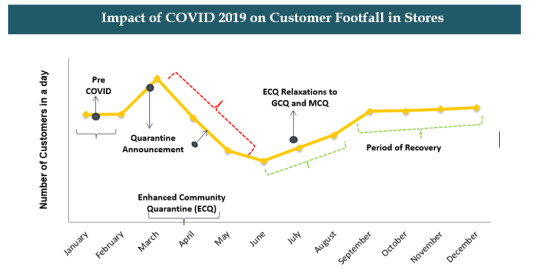
Other Challenges in Philippines Pharmacy Retail Market Outlook to 2025
Demand for OTC products like Alcohol Based Cleaners, Vitamin C and D Tablets, Immunity Boosters and Health Supplements was boosted during quarantine. Maintenance Medicines were also in high demand. During the starting of the Quarantine, Pharmacies witnessed increase in sales due to bulk purchase, later the sales declined. Pharmacies faced supply chain issues especially in the ECQ zones. This has affected the sales of the pharmacies. Further, Philippines witnessed lockdown for a long duration.
2.Trends and Development that the Pharmacy retail market of Philippines will experience.
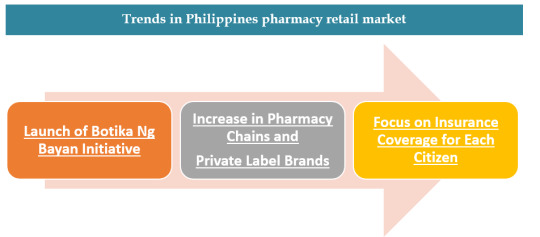
Download Sample Report
In July 2018, DOH relaunched Botika Ng Bayan initiative to provide free essential medicines for common diseases focusing on rural and poor people. The chain stores have increased tremendously in the Philippines. Especially TGP and Generika as they have adopted franchise model for store expansion. This increase in chained pharmacies has led to the growth of house brands or private labels. In starting of 2019, President Rodrigo signed Universal Health Care (UHC) Bill into law (Republic Act No. 11223) which automatically enrolls all Filipino citizens in the National Health Insurance Program. This will increase the healthcare affordability in the region.
3. Assessing the Possibilities in the Philippines Pharmacy Retail Market

Ask For Customization
Penetration of internet, growth of social media has opened more connectivity options for the companies.
Drive Through Stores, self-service stores are increasing customer convenience.
This has helped in increasing the footfall in pharmacies for purchasing non pharmaceutical products.
Chain stores can serve regional customers where they don’t have strong presence.
Key Segments Covered
By Market Structure (In USD Billion)
Organized Market
Unorganized Market
Type of Store Location (In USD Billion)
Standalone Pharmacy
Hospital Based Pharmacy
By Region (In USD Billion)
North
Central
South
By Type of Sales (In USD Billion)
Prescribed Medicines
OTC Products
Non Pharmaceutical Products
Medical Equipment
By Type of Drug (In USD Billion)
Generic
Patented
By Therapeutic Class (In USD Million)
Cardiovascular
Anti-Infectives
Pain/Analgesics
Anti Diabetic
Vitamins/Minerals /Nutrients
Dermatology
Respiratory
Gastro Intestinal
Neuro
Oncology
Contraceptive
Gynecological
Ophthalmological
Others
Companies Covered
Mercury Drug Corporation
Watsons Personal Care Stores
SouthStar Drug Inc.
The Generics Pharmacy
Rose Pharmacy
Generika Drugstores
Several Regional Players & Others
Key Target Audience
Pharmaceutical Manufacturer Companies
Pharmaceutical Importing Companies
Pharmaceutical Distributing Companies
Major Retail Companies
E-Commerce Pharmaceutical Retailers
Consultancy Companies
Industry Associations
Regulation Bodies
Time Period Captured in the Report:
Historical Period: 2014-2019
Forecast Period: 2020-2025
Key Topics Covered in the Report
Healthcare System in the Philippines
Major Hospitals & Doctors in the Women Healthcare
Usage of Contraception & Family Planning in the Philippines
Health Insurance in the Philippines
Supply Structure of the Philippines Pharmacy Retail Market
Trends & Development in the Philippines Pharmacy Retail Market
Issues & Challenges in the Philippines Pharmacy Retail Market
SWOT Analysis & BCG Matrix in the Philippines Pharmacy Retail Market
Philippines Pharmacy Retail Market Size & Segmentation, 2014-2019
Online Pharmacy Regulations in the Philippines
Telemedicine & Growth of Online Medical Consultation in the Philippines
Major Telemedicine Providers in the Philippines
Operating Model of Hybrid Pharmacies
Competition Scenario, Market Share, Cross Comparison of Major Players (Online & Offline) and Company Profile
Assessing Regional Pharmacies in the Philippines
Corona Virus Impact on the Consumer Behavior & Pharmacy Sales
Future Market Size and Segmentations, 2019-2025F
Covid 19 Impact on the Philippines Pharmacy Retail Market
Analysts’ Recommendations
Contact us:
Ankur Gupta, Head of Marketing and Communications
+91-9015378249
Follow Us
Facebook | Twitter | LinkedIn | Instagram
#Philippines Pharmacy Retail Industry#Philippines Retail Drug Market Report#Philippines Retail Pharmaceutical Sector#Philippines Retail Healthcare Market#Philippines Retail Wellness Market#Philippines Retail Medical Industry#Number of Intravenous Device Philippines#Number of Hospital Beds Philippines#Number of Test Centers Philippines#Number of Imported Medical Device Philippines#Number of Local Medical Device Philippines#Number of Diagnostic Labs Philippines#Number of Respiratory Devices Philippines#Organized Pharmacy Retail Market Philippines#Unorganized Pharmacy Retail Market Philippines#Standalone Retail Drug Market Philippines#Hospital Based Pharmacy Industry Philippines#North Retail Healthcare Market Philippines#Central Retail Pharmaceutical Market Philippines#Prescribed Medicines Market Philippines#OTC Products Industry Philippines#Non-Pharmaceutical Products Industry Philippines#Generic Drug Sector Philippines#Philippines Pharmacy Retail Market Opportunities#Philippines Retail Drug Market Trends#Philippines Retail Wellness Industry Challenges#Major Retail Healthcare Philippines#Leading Retail Pharmaceutical Partners Philippines#Emerging Retail Drug Market Philippines#Top Captive Players Philippines Retail Medical Sector
0 notes
Text
A growing push to fix pulse oximeters' flawed readings in people of color: 'This can be dangerous' | CNN
A growing push to fix pulse oximeters’ flawed readings in people of color: ‘This can be dangerous’ | CNN
CNN
—
As a triple threat of respiratory illnesses – flu, Covid-19 and respiratory syncytial virus, known as RSV – sweeps the United States, emergency departments are using one small tool more than usual to monitor whether a patient needs oxygen: the pulse oximeter.
“We’re in the midst of a respiratory flood,” said pediatric emergency physician Dr. Joseph Wright, chief health equity officer at…
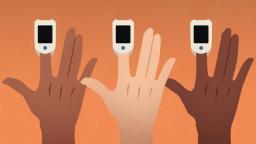
View On WordPress
#brand safety-nsf discrimination#brand safety-nsf health issues#brand safety-nsf products and consumers negative#brand safety-nsf sensitive#business#business and industry sectors#discrimination#diseases and disorders#domestic alerts#domestic-health and science#economy and trade#government organizations - us#health and medical#health care#iab-business and finance#iab-diseases and conditions#iab-healthcare industry#iab-industries#iab-lung and respiratory health#iab-medical health#iab-pharmaceutical drugs#iab-pharmaceutical industry#international alerts#international-health and science#medical devices and equipment#medical fields and specialties#medical research#Minority and ethnic groups#racism and racial discrimination#respiratory diseases
0 notes
Text
Xi Jinping's speech: yes to zero-Covid, no to market reforms? | CNN Business
Xi Jinping’s speech: yes to zero-Covid, no to market reforms? | CNN Business
Hong Kong
CNN Business
—
Even though China’s economy is beset by problems ranging from a real estate crisis to youth unemployment, Xi Jinping did not offer any grand ideas to set the country back on track during his two-hour opening speech at the Communist Party Congress on Sunday.
The Chinese leader is expected to secure an unprecedented third term in power at the week-long congress.…
View On WordPress
#asia#Business#business and industry sectors#China#continents and regions#coronavirus#diseases and disorders#east asia#Economic policy#economy and economic indicators#economy and trade#employment and income status#health and medical#infectious diseases#labor and employment#life forms#microscopic life#political figures - intl#real estate#respiratory diseases#social and economic status#society#Unemployment#viruses#workers and professionals#xi jinping
0 notes
Text
"Seminario cited the recent report, “Employer-Reported Workplace Injuries and Illnesses,” that shows that the number of respiratory illnesses in the private health care and social assistance sector increased from 145,300 in 2021 to 199,700 cases in 2022, an increase of 37.5 percent.
...
As an industrial hygienist, Seminario was extremely critical that there were no experts in respiratory protection on the committee nor did it include engineers who developed ventilation guidelines. She believes that the HICPAC committee members are likely so opposed to respirators “because once you are into recommending respiratory protection, with that comes a full respiratory protection program from OSHA,” with penalties for violations.
An epidemiologist and consultant, Michael Olesen, echoed this, believing the changes reflect “pressure to remove liability from hospitals.” He added, “I take a very clear position that we should be having respiratory protection mandates in all healthcare settings right now.”
...
Many patients who spoke at the HICPAC meetings said they had gotten Covid-19 when they went to the hospital and that the new policies were keeping them from getting care.
Given that, Dr. Art Caplan, professor of medical ethics at New York University’s Grossman School of Medicine, previously told me that dropping masking requirements in hospitals is “utterly, completely, irresponsible.” Similarly, staff refusing to mask, even when a patient requests it, is a moral failure. “The first principle is, you must do what is in the best interest of your patient,” he said.
...
Several people were asked why they believe HICPAC is determined to water down protections. Consistently, respondents say, “to reduce liability.” Earlier in the pandemic, hospitals regularly tested patients and staff for Covid-19, and you could often tell where and how you became infected. Since staff are no longer masking and continue working when ill, and patients are not being tested on admission, you can no longer prove who infected you. Hospitals are the only ones who win in this scenario, absolving themselves of responsibility and liability."
#healthcare system complicity#this is immoral and unethical#cdc#hicpac#wear a mask#keep masks in healthcare#covid#rsv#flu#masks#respirators#n95 masks
757 notes
·
View notes
Text
WIP Wednesday
Thank you to everyone who tagged me for Sunday and Tuesday, I've been really struggling with writing lately and it's been extremely disheartening but this morning I had A Singular Bean for Frostpunk AU and milked it for all it's worth! This snippet comes immediately after the Buck and Eddie POVs of being found in the cold. Please enjoy!
He suddenly feels responsible for their wellbeing, and maybe that’s why he refuses to leave the kid’s – Christopher’s – side until the rest of the team arrives, Eli carrying the heavy med kit on his back.
“I’ll get the man, Eli check the kid,” Bobby instructs, sinking to his knees beside Buck. “What’s the story with them, Buck?”
“I got here just a couple minutes before the guy passed out. Didn’t say his name but his kid is called Christopher. He looked super weak, a-and they’re both freezing.”
Bobby and Eli share a look over Buck’s shoulder and Eli gets to work on Christopher, checking his vital signs and most importantly, his temperature. Bobby repeats the same process on the father, while Tommy and Sal rifle through the backpack on the sled, checking for any useful information on where they’d come from.
“Found the guy’s papers, Cap,” says Sal, walking towards Bobby with a flimsy leaflet in his hand. “Say’s the guy’s called Edmundo Diaz, from Sector 126. He’s ex-military but his most recent job was in a sawmill, he might be useful.”
“We don’t save people based on use, Sal,” Bobby responds, his eyes not leaving Edmundo as he speaks. “He’s damn cold, temp sitting around 90 and his heart rate and respiratory rate are a little more elevated than I’d like. Eli, how’s the kid?”
“Looking fairly rough, Bobby, we’re going to have to hustle to get them back in time. His temp is at 91 so he’ll be looking at pretty severe hypothermia if we don’t warm him up soon.”
Bobby sucks air through his teeth, clearly thinking hard. “We’re a good 16 hours out from the city, 17 or 18 with these two and their gear. Think they’ve got it in them to make it that long?”
Eli makes a face. “I really don’t know, Cap. The kid, maybe, but the guy’s temp is a little too low for my liking. Maybe if we warmed them up a little, they’d have a better chance. Did Maddie say anything about being able get the snowmobile team out here?”
Buck perks up at the mention of the snowmobiles. The team was sent out a day before Buck’s team was, off on a search for supplies a few hundred miles away but were always on call in case a rescue was needed. Getting them to help would cut their travel time almost in half, giving Christopher and Edmundo the precious hours needed to save their lives.
“I- I could ride one back with the kid, if they didn’t want to spare a man, Bobby?” he asks hopefully.
Sal snorts from his position by the sled. Buck’s love for the snowmobiles is no secret and Bobby’s spent many a mission patiently explaining why it wouldn’t be safe or necessary and otherwise spoiling Buck’s fun. However, this situation calls for haste and Buck is nothing if not an – ah – efficient driver.
Bobby looks thoughtful, before standing up and brushing the snow off his pants. “I’ll give dispatch a call and see if she can reroute them to us,” he says, continuing quickly as he watches Buck light up, “but I will be driving. You need to look after the kid, okay?”
Buck deflates a little, but something in him stirs as he turns to look at the little figure in the snow next to him. He’s so young, probably no older than 7, and Buck’s heart breaks for him. He’s too young to be experiencing the hardships of the Winter, too innocent to have to watch his father weaken as they journey to a safer home. It’s like a small fire has been kindled in the pit of Buck’s belly as he shuffles closer to the boy and snakes an arm under his neck and the other under his legs, pulling his tiny frame up so he’s in Buck’s lap.
Buck is going to protect this boy with his life.
No pressure tagging @theotherbuckley @hippolotamus @tizniz @watchyourbuck @wikiangela @daffi-990 @thewolvesof1998 @pirrusstuff @cal-daisies-and-briars @kitteneddiediaz @spotsandsocks @jesuisici33 @rainbow-nerdss @wildlife4life @puppyboybuckley @smilingbuckley @disasterbuckdiaz @bucksbackwardcap @fortheloveofbuddie @evanbegins @steadfastsaturnsrings @buckbuckgoose @exhuastedpigeon @housewifebuck @slightlyobsessedwitheverything @alliaskisthepossibilityoflove @elvensorceress @babytrapperdiaz @ci5mates @hermscat (let me know if you want to be added or removed from this)
#brain not braining#write not writing#hell the what happening#ANYWAYS it's all uphill from here chaps#frostpunk au#911 buddie#buddie#eddie diaz#911 abc#evan buckley#911 fanfic#911verse#911#eddie x buck
88 notes
·
View notes
Text
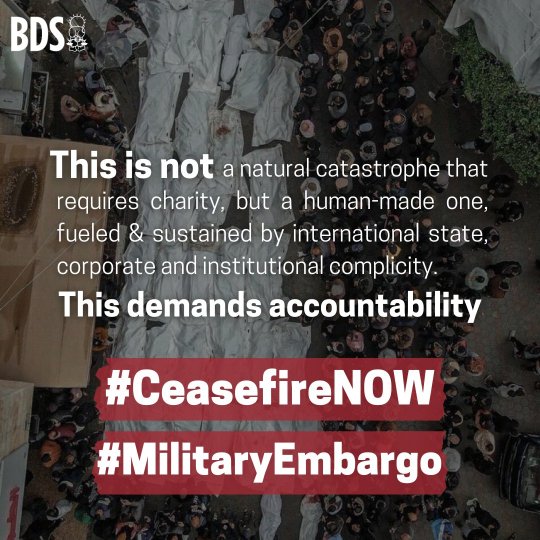
Israel's genocidal war on 2.3 million Palestinians in Gaza has killed over 20,000 Palestinians in the Gaza Strip.
9,000 Palestinians among them have succumbed to their wounds due to lack of medical care amid the collapse of the healthcare sector.
1,000 Palestinian children have undergone the unimaginable trauma of having their limbs amputated without anaesthesia.
900,000 Palestinian children in shelters are at risk of dehydration, famine, anaemia, as well as respiratory & digestive diseases.
50,000 pregnant Palestinian women are in shelters without water, food, or health care, and about 180 women give birth every day in unsafe and inhumane conditions.
We're not numbers; behind these statistics are real lives, each with our own dreams, struggles, and stories.
This is not a natural catastrophe that requires charity, but a human-made one, fueled & sustained by international state, corporate and institutional complicity. This demands accountability.
The US & Europe are more than just complicit in Israel’s genocidal war, they are active partners in its #GazaGenocide!
Permanent #CeasefireNOW and lifting Israel’s siege. Lawful sanctions on Israel, including a #MilitaryEmbargo.
Stop #GazaGenocide
— BDS movement (@BDSmovement) December 29, 2023






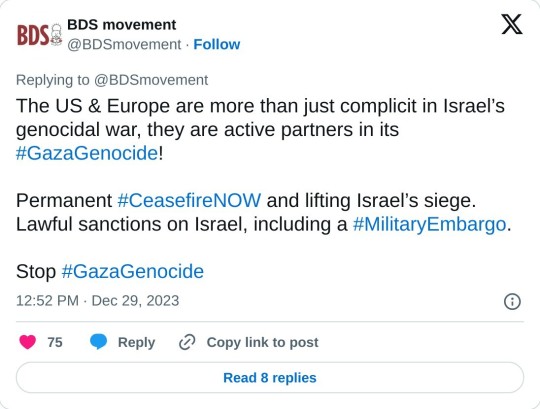
#CEASEFIRE NOW#palestine#free palestine#from the river to the sea palestine will be free#united states#european union#complicit in genocide!
50 notes
·
View notes
Text
https://www.yesmagazine.org/environment/2022/07/15/navajo-nation-citizen-science-pollution
Methane pollution is poorly tracked, so Diné activists are monitoring it themselves.
—
From behind her FLIR GF320 infrared camera, Kendra Pinto sees plumes of purple smoke otherwise invisible to the naked eye. They’re full of methane and volatile organic compounds, and they’re wafting out of an oil tank in New Mexico’s San Juan Basin.
Pinto, a member of the Diné (Navajo) community and field advocate with environmental group Earthworks, relies on this device in her fight to keep her community’s air clean. She lives in the Eastern Agency of the Navajo Nation, home to booming oil and gas production.
“When I walk outside, I can’t just think about fresh air. I’m thinking about the VOCs. I’m thinking about the methane that I’m breathing in, because I know what’s out there,” Pinto said. “I see it all the time.”
She’s one of countless citizen scientists across the country who are tracking and reporting environmental harms committed by the oil and gas industry to regulators. And here, there are many: The Environmental Defense Fund estimates that each year, New Mexico’s oil and gas companies emit more than 1.1 million metric tons of methane, a greenhouse gas around 86 times more potent in its warming potential than carbon dioxide over a 20-year period. Much of this comes from wasted natural gas—$271 million of it in this state alone, according to the EDF. It leaks out of faulty equipment and is intentionally expelled through the processes of venting and flaring, in which excess, unrefined natural gas is released or burned from oil wells and refineries to eliminate waste or reduce pressure buildups.
This is bad for the planet—high volumes of methane released into the atmosphere accelerate the pace of the climate crisis. It’s also bad for the people who live around it who are exposed to the pollutants that typically come along with methane emissions, like benzene, a carcinogen, and PM2.5 and PM10—particulate matter small enough to get lodged deep in the lungs. Pinto said her neighbors experience disproportionately high rates of headaches, nosebleeds, allergies, and respiratory issues, like sinus and throat discomfort.
“I think the scariest thing about methane is it’s odorless,” Pinto said. “It’s a silent killer. And if my neighbors are breathing it in, that’s worrisome.”
These emissions and the fossil fuel development that causes them have long been “insufficiently regulated,” said Jon Goldstein, senior director of regulatory and legislative affairs at EDF. In 2020, then-president Donald Trump rolled back Obama-era regulations on methane that effectively eliminated the requirement that oil and gas companies monitor and repair methane leaks in their infrastructure.
The Senate voted to reinstate them in April 2021, and last November, the Biden administration announced it would introduce even more comprehensive regulations in an interagency effort to crack down on emissions from the oil and gas sector. As part of the plan, the Environmental Protection Agency proposed its own rules, which include a requirement that states reduce methane emissions from thousands of sources nationwide, and a provision that encourages the use of new technology designed to find major leaks. A final methane rule is expected to be implemented later this year.
The Navajo Nation, too, is taking things into its own hands: The Navajo Nation Environmental Protection Agency is currently considering adopting a permitting program to regulate methane from oil and gas development on its land.
Here, methane emissions from oil and gas companies are 65% higher than the national average, seeping out of pipelines, oil rigs, and the like. The San Juan Basin, some 150 miles northwest of Santa Fe, has received a failing grade from the American Lung Association for ozone pollution, or smog, the result of the combination between VOCs and radiation from sunlight.
Exposure to ozone has been tied to degraded respiratory health and asthma attacks, and it’s typically seen in cities, Goldstein said.
“The San Juan Basin isn’t home to large cities,” he said. In San Juan County, ozone is the result of the widespread build-out of oil and gas wells; approximately half of the county’s 50,000 residents who identify as Indigenous live within half a mile of those wells, according to EDF.
Catching emissions at the source will be crucial to changing this legacy. And where regulators can’t (or won’t) step in, residents like Pinto are. The federal government is now relying upon community monitoring, or work that citizens do to contribute to public understanding of the scope of air pollution near fossil fuel sites, a development that Eric Kills A Hundred, tribal energy program manager at EDF, believes will be “huge.”
The EPA’s methane proposal includes a plan to implement a program to “empower the public to detect and report large emission events for appropriate follow-up by owners and operators,” according to an agency news release.
During the comment period for the EPA’s proposed community monitoring program, members of the petroleum industry questioned whether the agency has the authority to establish it at all, primarily objecting to the idea that air quality monitoring be conducted by entities other than agencies and producers themselves, E&E News reported in May.
But Pinto said groups like Earthworks have a track record of doing this work long before federal regulators began tapping them for their data collection.
“Documenting these types of emissions is important because no one else is really doing it,” she said. “Even the agencies that are regulating this type of thing. Because we’re in a rural area, what can they actually capture when they come out here? Are they going to more than 100 sites?”
Kills A Hundred said these efforts are not only about what the Navajo Nation can contribute to government data on methane pollution, they’re also about empowering the community to play a role in stopping it.
“Having been the stewards of the land for so long,” he said, “it’s just so important for these communities to be active and raise their voice.”
#indigenous#native american#climate crisis#methane#fossil fuels#greenhouse gas emissions#navajo#dine#diné#navajo nation#epa#environmental action#pollution#science
642 notes
·
View notes
Text
Breathing New Life: Exploring the $43.2 Billion Respiratory Market
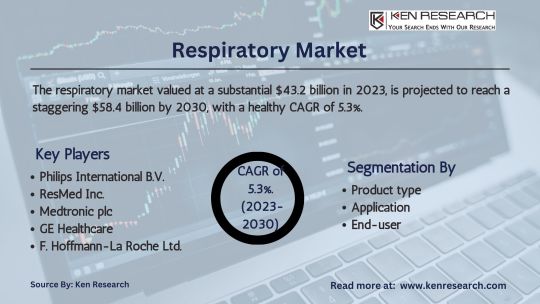
Discover the $43.2 billion respiratory market, analyzing its revenue, growth rate, size, and segmentation. Explore therapeutic devices, care equipment, and accessories driving growth in this vital healthcare sector.
#Respiratory Market#Respiratory Industry#Respiratory Sector#Respiratory Market Analysis#Respiratory Market Revenue#Respiratory Market Growth Rate#Respiratory Market Size#Respiratory Market Segmentation#Respiratory Care Devices Market#Respiratory Devices Market#Therapeutic Respiratory Devices Market#Respiratory device accessories market#Respiratory Care Equipment Market#Respiratory diagnostics market#Respiratory measurement devices market#growth of Respiratory industry#Respiratory Industry Competitors#Opportunities in Respiratory Industry
0 notes
Photo
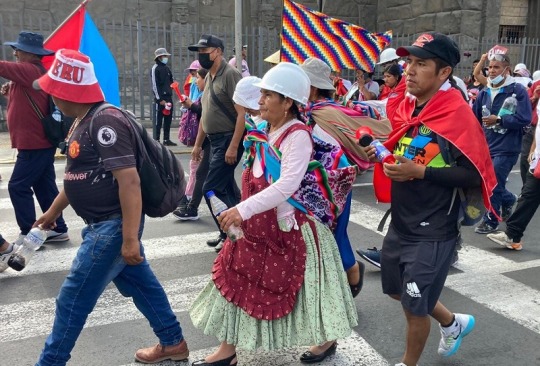

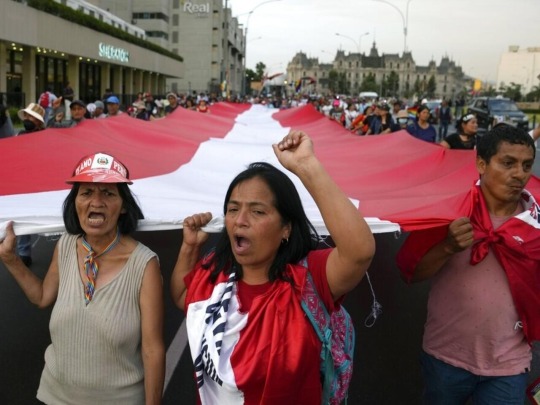
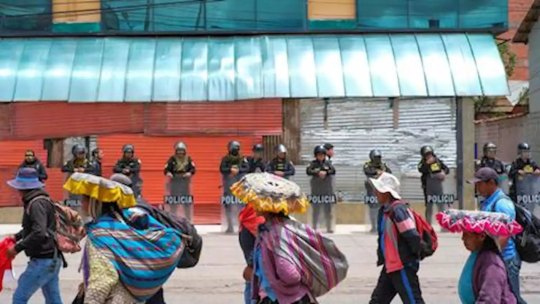


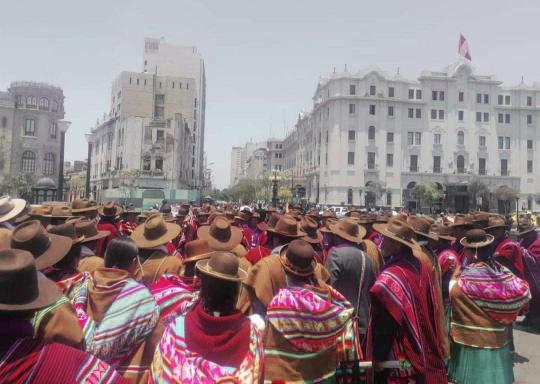
Citizen insurgency and role of Andean women 2023-02-03
By Linda Lema Tucker . sociologist
Women are being protagonists of this great story that is yet to be written: the protests of the citizen insurgency. These days, in Lima, great days of democratic struggle are taking place, in which hundreds of women, from the most infinite corners of Peru, with loud and forceful voices, demand the resignation of Dina Boluarte, the closure of Congress and Constituent Assembly.
They left behind their children, the harvest, the cattle. They have broken the private sphere and have joined political affairs, to propose solutions to old problems that are still unresolved. They have faith that a new dawn in Peru is about to arrive. In protests they are distinguished by their colorful and bright skirts, their woven llicllas that they carry on their backs and shoulders, and their wonderful Aymara or Quechua language. They are not willing to return to their towns until Dina resigns, because her resignation is to fulfill that promise they made to the sixty murdered Peruvians, who would fight until the end, until this dictatorial regime abdicates. They carry in their memory and are the inspiration of their struggles, the story of brave Quechua and Aymara heroines, who preceded them as inspiration. They also know that this is a new time, in which the collective force has to overcome the old that has to lay the foundations for a rebirth of a new state, in which forgotten sectors of the country participate in power in a constitution of a new republic.
Women, the streets and the new leaderships These days, with great intensity and force, women march through the streets of Lima, launch harangues, sing and dance huaynitos, demanding the resignation of "la Dina", as they usually call her. We have walked blocks and blocks with them, until the police surprised us and repressed us with tear gas. The gas suffocated, when I saw that, in their saddlebags, they carried handkerchiefs and vinegar to avoid burning in the respiratory tract. We continued marching and he heard the loudest proclamation, "Dina, murderer, the people repudiate you." Until arriving at Plaza Dos de Mayo, where a commission of women waits for the compañeras to get sandwiches and drinks. That solidarity surprises me. But it is striking to see new women leaders, Quechua and Aymara, who, with braids, flip flops and a Peruvian flag tied around their necks, continue to harangue with surprising force, offer interviews and express their feelings and opinions about the meaning of the struggle. of their communities and towns. They do not stop demanding Boluarte's resignation, saying: “She ordered our children and brothers to be killed and has not asked for forgiveness. She is a ruthless woman, who is militarizing our towns to continue killing us." This energetic political possession with which women speak is an expression that something important is happening in deep Peru.
They continue to protest in the central streets of Lima, in addition, they have done so in districts called exclusive, San Isidro and Miraflores, where, before, some "gentlemen" believed they belonged to them. Let us remember that, not long ago, Andean women were kicked out of Larcomar in rejection of their ways of dressing and customs of a country that, paradoxically, has a multiethnic and multicultural origin. In addition, for many years, the program La Paisana Jacinta was broadcast on television, which constituted an insult and a racist attack on the dignity of indigenous peasant women.
That is why, the insurgency that is developing now against this regime, is marked by the historical accumulation of so many abuses, discriminations and violence against the majority of the population that has an indigenous origin, therefore, the necessary democratic change must come from the original peoples in order to eliminate so much pain and establish a different destiny for millions of Peruvians.
Fighters tied to history Throughout these days, we have observed that women are united by history, that history that feminist women are now writing and that is being repeated today, by Andean women, university students, workers, housewives, and feminists, who they have joined the historic struggle in the streets, in the relief brigades, in the alternative press, in the aid of food on the highways, the women with multicolored skirts, flip flops and huaraca in hand, confront the police – like we have seen in the networks -, actions, all of women to put an end to a totalitarian regime, anti-women, as Micaela Bastidas did in Cusco, or Rita Puma Justo, in Puno, heroines who, like many others, raised their voice of protest and participated in historical episodes, against domination and gender violence, exercised by patriarchal and oppressive regimes, which considered indigenous women as an inferior race and gender.
https://www.noticiasser.pe/insurgencia-ciudadana-y-protagonismo-de-las-mujeres-andinas?fbclid=IwAR3sF6SsW1rbFRvTjfcjg6TGrVeTQ7P1uiekHjH5LohdfnxElqve66x6CJw
#Peru#Peru unrest#Linda Lema Tucker#dina boluarte#peru protests#indigenous repression#indigenous Aymara women#racisme#Peru racisme#human rights#Peru highlands women#Peru: Aymara#Peru:Quechua indigenous population#indigenous Peru#Andean women#Noticias Ser#indigenous
202 notes
·
View notes
Text
Never Forgotten // Vader x F!reader / Ch 2

(A/N: welcome back!!! thank you so much for the support and i hope you all continue to enjoy the series :))
working as a medic, you are approached with a new patient
Warnings: mention of TIE fighter crash, respiratory problems, medical procedures, bad punctuation and grammar,
F/N- first name
__________________________________________
Between your departure and the beginning of the clone wars, you spent your time traveling from system to system gaining new techniques and knowledge of health care. You excelled at the medical academy and already gained much experience. Your patients included Jawas, Wookiees, togrutas, government officials, humans, and even mandalorians. Now those were hard patients.
Once the clone wars hit you were hired as a battlefield medic for the republic. You had no real qualms over the government, your loyalties were to living organisms, no matter who or what they had done. Being Surrounded by Jedi knights, you couldn’t help but think of Anakin. You selfishly hoped he never found someone to replace you.
While on the planet Naboo before the war broke out you heard talk of senator Padme Amidala’s new Jedi bodyguard. It seemed as if they were romantically involved which is why it was such a hushed scandal. You of course remembered her as the beautiful young girl who you would never compare to. There's no way that Jedi could be Anakin. Right? No it couldn’t be. Either way your main focus now was keeping your patients alive and healthy.
“B” a nurse called
You turned, “Yes?”
“Patient 67 was moved to sector C, but they still need the bacta transfusion and the aloe salve”
“I’m on it”
“The Botanist” or just “B” is what people called you now, I guess it was better for anonymity? But they mainly called you that because of your signature remedies were ones made of plants. For your final you chose to do a study of different plants with healing properties. After many hours of research you found a plethora of uses for many different botanical organisms. Each species reacted differently to certain plants, for some plants could cure all diseases, but others they would only heal a scrape. Either way you employed plants healing capabilities, in some way, to almost every case you got.
After the war the steady need for medics was dying down. Many of your colleagues opted to settle down in a steady system and open their own practice. Some of you wanted that too but deep down you knew that was not your destiny. You barely ever got a chance to reminisce of your past but every so often you would miss the boy you loved on Tatooine. Where in the galaxy is he now?
You had gained notoriety as a skilled healer who served during the clone wars. A healer who could alleviate the most severe of symptoms, who never turned down someone in need. Throughout your career you were offered many permanent positions, but you could not be swayed no matter how hearty the deal. You still had something to do, you were still unfulfilled.
Some time after order 66 you got wind to the termination of the Jedi. Hm. For a moment you sat silently…. You allowed yourself to mourn for the countless lives lost, you let yourself mourn for…him… Anakin. Though you wouldn’t sadden yourself with the possibilities, you always wished for his mothers affirmations to come true. But now you are an adult with responsibilities, there was no time for fairy tales.
About five years had passed since the fall of the republic, now only the domineering empire remained. Personally the governmental shift had not affected your small life. You didn’t know much of the inner workings of this new system. You only heard daunting stories of those who crossed them. You had heard of the feared Darth Vader, a man in a black armored suit, his ruthless red lightsaber the demise of so many souls. Yikes. You wondered if whoever was in the suit had a hand in the termination of the jedi not so long ago.
You were working out of a small mining system, helping locals recover from a major explosion in one of the mines. Heading back to your camp after a long day of work, you felt a sense of unease. Your senses were fighting for you to flee. Why? As much as you tried, you just couldn’t shake that feeling. Your fears were confirmed when you saw four stormtroopers huddled around your camp. Your brain screamed for you to run but your legs continued walking. Why would imperial troopers be at your camp? You had never had any run-ins with the law before.
Gingerly you stepped into their view.
“H-Hello? Can I help you?”
They turned together in tandem, blasters held close to their chests. The one closest to you stepped forward and glanced down at you.
“Are you the medic known as the Botanist?”
Suspiciously you nodded, “is there something I can help you with?”
“We have orders from the emperor to retrieve you.”
“May I ask the reason for this sudden disturbance?” You asked
“His majesty wishes to employ you as his apprentice’s personal physician.”
You began to shake your head, “I do not take exclusive patients, I need to be available for all who require my assistance. Taking this job would mean-“
“Do you really have a choice?” Interrupted another trooper. Your eyes darted between the four figures, blasters perfectly on display.
“I guess I really would be no help if I were dead?’ You thought to yourself.
“No, I will accompany you, do you at least happen to have a file I could study on my new patient?” You sighed, defeated.
The troopers nodded at each other and started walking.
“Hello?” You asked hurrying to grab your bag trying to follow them.
“Further north you will reach a port, from there you will be guided onto an imperial vessel, I assume you will be given the file there. If you fail to reach the port, you will be tracked, hunted, and killed.”
The man’s words sent a shiver down your spine. Luckily you had been operating around this planet for a few months and knew the quickest way to the port. You nodded at the troopers and headed on your way, only your backpack in tow.
__________________________________________
You knew the quickest route to the port, but it was still a long haul. By the time you reached the entrance around five hours had passed. You alternated between hitching rides and walking to reach the destination. You walked in seeing mostly locals sending out shipments or unloading cargo. The large ship on the end of the dock was not easy to miss, the imperial crest adorning its flanks.
You approached the vehicle nervously. Stormtroopers dressed in black armor guarded the entrance.
“Hi there, I was sent by a squadron from the east sector. I’m a medic”
“The botanist?” Asked the slightly taller trooper.
“Yes” you confirmed laughing nervously.
The two gave each other a look and stepped out of the way so you could board the carrier. Giving them one final nod you entered the maw of the ship.
How did you get here? What were you doing? You never had any run ins with the empire before now so how would they have even known of your existence? Why did the emperor want you specifically? Who was his apprentice? Why did he need your assistance? What in the galaxy was-
You were pulled from your thoughts as an imperial officer grabbed you by the shoulder.
“This way, medic.” They spat.
They brought you to a small seating area and motioned for you to take a seat. You nervously sat as they chucked a large file into your lap.
“You have from now until we reach our destination to become acquainted with your patient”
You looked at them dumbfounded, you only just heard you were becoming a personal physician and the file in your lap was rather large.
“Where are we going? How long will I have to study the patient’s file?” You asked.
Rolling their eyes, the officer shortly snapped out,
“If you must know. Mustafar.”
Before turning and quickly exiting, air tight doors sealing behind them.
Mustafar? You had only ever visited the volcanic planet once and the heat alone was enough to keep you away.
What kind of person could stand to live there? You pondered as you prepared to begin studying the gargantuan folder.
__________________________________________
Mustafar was an uncomfortable planet to say the least. Why anyone would live there was questionable. But one man chose to construct a fortress of the active planet. Heavy footsteps followed by rhythmic breathing filled the corridor as the master of this fortress made his way to his throne room.
He effortlessly created a foreboding demeanor even as he simply sat down. Dressed in the darkest black, the Sith Lord sat on his throne, large body exuding an aura of dominance. In front of him a blue holo-figure, a ghastly old….man? The once human face twisted and contorted by hate and insanity spoke to the man in the chair,
“Lord Vader”
“Master.”
“How has your recent recovery faired?”
The dark lord paused for a moment to gather his thoughts. Recently he was involved in a large TIE crash, to further the damage after the crash he was set to face a skilled opponent upon arrival. He was always in pain, but the new blaster burns and the injuries from the crash had impacted him severely.
“It is…adequate, my master” he finally responded
The sickly man raised his head to reveal his glowing eyes.
“Your…efficiency has been…strained as of late, lord Vader.”
Those words cut into the mechanical man, he took in deep breath.
“My apologies, master. I will assure the utmost success for my future endeavors” He felt suddenly short of breath, respirator kicking in to save him the struggle of trying to breathe on his own. His masters eyes widened and his mouth opened downwards.
“Ahhhh… I see you are struggling, my apprentice.
This could become a problem”
Vader’s back stiffened, “NO. No, my master, I have everything under control, the droids in my medical wing have been upgraded recently and I-“
The emperor cut off the armored man.
“I have arranged for a highly…. Reputable medic to aid you with your….ailments.”
Vader felt his chest tighten, he didn’t need anyone.
“Master ple-“
“They are set course on a vessel as we speak.”
Vader was silent. He would not be seen as weak. He would end the medic’s life.
Palpatine spoke once more.
“You will fail me no longer. You will accept these treatments and you will be restored to your highest efficiency. Am I clear”
Efficiency. He really was just a machine of the empire. Just a weapon.
“Yes, master.” Vader confirmed. Palpatine smiled his all knowing smirk and faded out of the call.
Left to his thoughts, Vader rested his head in one of his gloved palms. He felt as if the only time he wasn’t being used as a weapon or even a fighter was as his days with his mother on Tatooine. Watto used him. The jedi used him. Obi-wan used him. The empire used him. Palpatine used him.
Padme.
Padme didn’t love him.
but….
His mother never used him. Neither did…
she.
F/N.
***
(a/n: aahhhh, the next chapter should actually have some reader/ vader interaction yaaay :))) i hope u guys r enjoying it here <3)
taglist: @dokoni-mo @the-official-memester @guinea-pig16 @wizardofrozz @jar-of-moondust @stxrrielle
#darth vader fanfic#darth vader fic#darth vader x reader#sw darth vader#darth vader x you#darth vader x y/n#vader x reader#vader#sw vader#star wars x reader#star wars x y/n#star wars#lord vader#vader x you#sw ff#fanfic#never forgotten#thanks for reading#🦦 anon#🦦#i love u guys#anakin x reader#anakin x y/n#sw anakin#medic S/O#anakin skywalker
317 notes
·
View notes
Text
In 2023, a significant demographic milestone emerged with broad social and economic impacts: the global population of adults aged 50 surpassed the number of children under 15 for the first time. Brunei Darussalam, a small, oil-rich Islamic country on the island of Borneo in Southeast Asia, faces challenges associated with this shift. Ranked as one of the world’s wealthiest nations due to its vast oil and gas reserves, Brunei’s population of 455,858 sees a contrast with a poverty rate of 5%, positioning it 11th out of 78 countries.
Hajah Nor Ashikin binti Haji Johari, Permanent Secretary at the Ministry of Culture, Youth and Sports (MCYS), highlighted the profound economic impact of the aging global population, noting the substantial expenditures on health care, research and support services. Furthermore, Hajah pointed out the rapid growth of the aging population and its broad implications. During Brunei’s chairmanship of the Association of Southeast Asian Nations (ASEAN) in 2021, Johari emphasized Brunei’s leadership in endorsing the ASEAN Comprehensive Framework on Care Economy.
Additionally, in 2017, an action plan spanning five years was adopted to enhance elderly development, welfare and protection, aiming to create a senior-friendly support system and reduce elderly poverty in Brunei. Unfortunately, an aging demographic compounded by an ominous surge in noncommunicable diseases (NCDs) such as heart disease, cancer, chronic respiratory disease and diabetes challenges Brunei’s socio-economic development.
Addressing Poverty and Social Protection in Brunei
Bruneians who live in poverty prefer to use the phrasings “living in need” and “difficult life” over “poverty” and “poor.” This exchange of phrasings intends to protect an individual’s self-confidence and self-esteem. Yet this preference challenges officials’ attempts to accurately assess the severity of poverty and implement targeted interventions.
However, Brunei’s social protection schemes encounter challenges. These challenges include limited coverage, differential treatment between public and private sectors, exclusion of unemployed individuals and inadequate support for vulnerable groups such as divorcees, widows/widowers, single parents, orphans, the abused and disabled people.
The Dual Impact of an Ageing Society
Across developing countries, evidence showcases the productivity, creativity, vitality and participation of older adults in workplaces, communities, households and families. According to ageInternational, some of the pros of an aging society include:
Consumer Market: Older adults can create new opportunities in the consumer market with higher disposable incomes and specific needs that can drive economic growth.
Accumulated Knowledge: An aging population can possess a wealth of knowledge and experience, beneficial for education and mentorship.
Stable Workforce: Older individuals provide greater stability in employment as they switch jobs less frequently.
In addition, the aging population significantly impacts the labor market. The dependency ratio, which compares the number of economically inactive individuals to those who are economically active, is set to increase. According to the International Labour Organization, some of the cons of an aging society include:
Labor Shortages: Addressing the need to create jobs for young individuals and encourage lifelong learning for older individuals to acquire new skills.
Pension and Retirement Challenges: Ensuring adequate pensions and financial support for retirees.
Limited Social Support Systems: Establishing social support systems, including affordable housing and accessible transportation, to enhance the quality of life.
Health care Costs: Investing in health care infrastructure to meet the growing needs of an aging population and prioritizing preventive health care measures.
Brunei at a Demographic Crossroads
As Brunei Darussalam navigates through its complex demographic and health landscape, proactive and holistic measures become imperative for securing the future prosperity of its people. Moreover, by addressing the multifaceted challenges head-on, Brunei is poised to set a precedent for demographic resilience and health sustainability.
Above all, the nation’s commitment to comprehensive solutions promises not only to enhance the well-being of its aging population and reduce elderly poverty in Brunei but also to pave the way for long-term national growth. At this pivotal juncture, Brunei’s journey offers valuable insights into the power of foresight and action in shaping a thriving society.
– Pamela Fenton
4 notes
·
View notes
Note
I've noticed a trend, and I figured I'd bug you about it since you seem fun!
A lot of space media seems to gravitate to an alien hivemind, which I get, BUT it's always either undead, or bugs.
Xenomorphs, Tyranids and Zerg are all bugs.
Then theres the Necromorphs, Flood and Reapers, which are all space zombies (though the reapers are more like space liches? idk they're kinda weird)
Just thought it was an interesting thought :3
See Xenomorphs and Zerg actually have a queen and the individual creatures are compelled to serve it, but i don’t think Tyranids do. While they have Norn Queens, i think those are just the biggest synapse junction we’ve found in the canon, short of That Fucking Flesh Mountain in the Tiamat System. Tyranids losing synaptic link are kinda like your hand twitching on the ground after it got cut off if your hand also it has its own respiratory and digestive system. The Tyranid ‘Hive Mind’ is a singular hungry will flowing psychically down through the synapse link, like every Termagant is a single cell of an intergalactic organism. The loss of entire hive fleets is the severing of one of tens of questing tendrils as the Hive Mind prods our galaxy like a child confronted with a strange meal. The scale of its consciousness eclipses our ability to articulate, and sector sized wars are but paper cuts on the fingertips of a threat that will swallow the stars. The bugs have nothing on this shit, and only the Flood is remotely comparable in the scale of its intellect.
46 notes
·
View notes
Text
Revolutionizing the Construction Landscape: Non-Asbestos Corrugated Sheet Making Machinery
In recent years, the construction industry has witnessed a significant shift towards more sustainable and safer building materials. One such innovation that stands at the forefront of this revolution is non-asbestos corrugated sheet making machinery. This groundbreaking technology not only champions environmental sustainability but also ensures the safety of workers by eliminating the health hazards associated with asbestos.
Understanding the Perils of Asbestos
For decades, asbestos was a popular component in building materials due to its durability and fire-resistant properties. However, it was later discovered that asbestos fibers, when inhaled, can lead to severe respiratory issues, including lung cancer and mesothelioma. This revelation necessitated an urgent move towards safer alternatives, leading to the development of non-asbestos corrugated sheets.
Enter Non-Asbestos Corrugated Sheet Making Machinery
The introduction of non-asbestos corrugated sheet making machinery marked a pivotal moment in construction material technology. These machines are engineered to produce high-quality corrugated sheets made from safe, non-asbestos materials such as cellulose fiber, cement, and silica. The result is a product that not only matches the durability and fire resistance of its asbestos-containing predecessors but also surpasses them in environmental and health safety.
How It Works
Non-asbestos corrugated sheet making machinery operates through a sophisticated process that combines raw materials (cellulose, cement, and silica) under high pressure and temperature. The mixture is then extruded into sheets, corrugated to the desired profile, and cured to achieve the required strength and durability. This highly automated process ensures consistent quality while minimizing human exposure to harmful substances.
Advantages of Non-Asbestos Corrugated Sheets
Safety: The primary benefit of these sheets is their non-toxic nature, making them safe for both the environment and human health.
Durability: Despite being lightweight, these sheets exhibit remarkable strength and longevity, resistant to both fire and water.
Energy Efficiency: The thermal properties of non-asbestos materials make these sheets excellent insulators, contributing to energy savings in buildings.
Cost-Effectiveness: While offering superior qualities, non-asbestos corrugated sheets are competitively priced, making them an economical choice for roofing and cladding.
The Future Is Here
The adoption of non-asbestos corrugated sheet making machinery is not just a technological advancement; it's a commitment to global health and environmental preservation. As more industries recognize the importance of sustainable and safe construction materials, the demand for these machines is expected to rise, signaling a new era in the construction sector.
A Call to Action
The transition to non-asbestos technologies requires concerted efforts from manufacturers, policymakers, and the construction community. By investing in non-asbestos corrugated sheet making machinery, the industry can take a significant step towards eradicating the risks associated with asbestos, paving the way for a healthier and safer future. In conclusion, non-asbestos corrugated sheet making machinery represents a transformative development in the construction materials industry. It not only offers a viable alternative to hazardous asbestos but also aligns with the global move towards sustainability. As we continue to build our future, it is technologies like these that will ensure our constructions are safe, durable, and in harmony with the environment.
2 notes
·
View notes